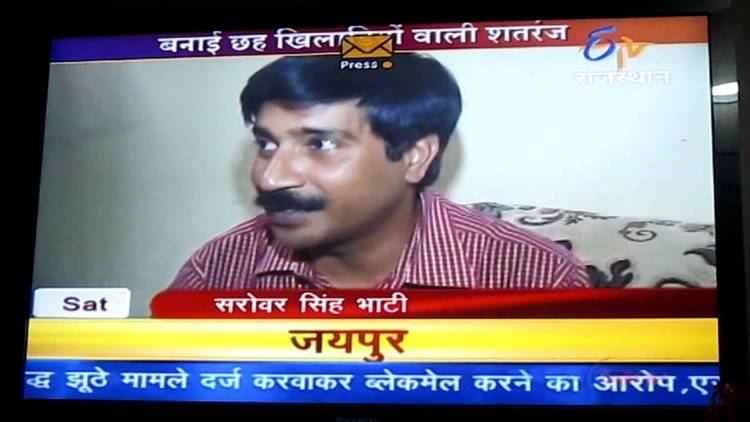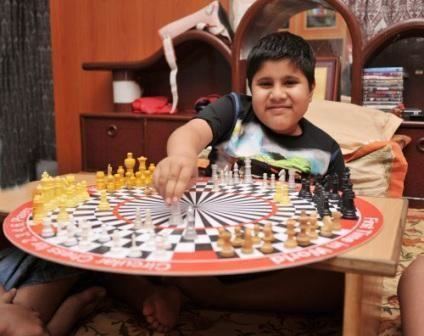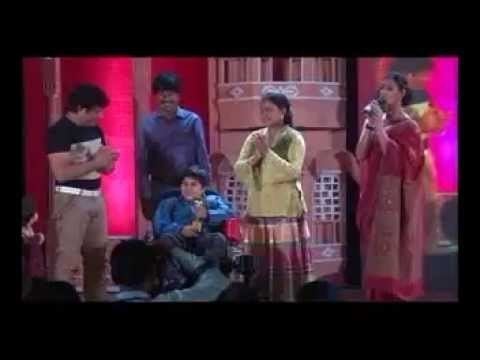Nationality Indian | Name Hridayeshwar Bhati | |
 | ||
Born 3 September 2002 (age 23) ( 2002-09-03 ) Jaipur, India Known for Inventing six-, twelve-, and sixty-player circular chess variants Website Hridayeshwarsinghbhati.com | ||
National award for disable hero won by hridayeshwar singh bhati youngest patent holder of india
Hridayeshwar Singh Bhati (born 3 September 2002) is an Indian student who, at the age of 9 and with his father's assistance, invented a six-player variant of chess. He earned a patent for his invention in 2012, making him the youngest patent-holder in India at that time.
Contents
- National award for disable hero won by hridayeshwar singh bhati youngest patent holder of india
- National award for disability icon child prodigy hridayeshwar singh bhati
- Six player circular chess
- Rules
- References

For his invention Bhati received the CavinKare Ability Special Recognition Award and the Sri Balaji Society's Child Innovator Award. He has since designed and received patents for twelve- and sixty-player versions of his game, with his boards capable of 100 distinct variations altogether. Besides circular chess, Bhati has developed a ramp system enabling easy access to vehicles for the disabled. In 2014 he was presented a Dr. Batra's Positive Health Award by Mahendra Singh Dhoni.

Bhati suffers from Duchenne muscular dystrophy and uses a wheelchair. He credits his passion for invention to his admiration of British physicist Stephen Hawking: "I want to be like Hawking who became a famous scientist despite suffering from motor neuron disease."

National award for disability icon child prodigy hridayeshwar singh bhati
Six-player circular chess

Bhati's version of chess is played on a circular board with 228 black and white "squares" (spaces). The 12 red squares are not used. Up to six players in teams of two or three can play. Bhati's multiplayer design employs all the standard chess pieces and their moves. Individual armies are distinguished by colour.
Rules

Each player starts the game with the same number and types of pieces as in standard chess. Non-pawn pieces start in their normal positions on the back ranks (the 8×1 extensions at the board perimeter), with queens always placed to the left of kings. Pawns are placed on the rank in front of the pieces as in standard chess.
Red squares cannot be occupied or passed through when moving or capturing. The multicoloured central area can be passed through but not occupied. It is considered a single "null" space, so a square bordering it is considered adjacent to the square on the direct opposite side of the null area. (E.g., a pawn on a square bordering the null area that moves one step straight forward, will end its move on the opposite side of the null area on the same-coloured square.)

The king, knight, and pawn have their standard chess moves, unaffected when crossing the central null area, where a square directly across is considered adjacent. A pawn promotes as normal when reaching any player's back rank. A rook moves horizontally along concentric rings of squares, and vertically along files, including crossing the central null area and continuing along the same file in a straight line. When moving horizontally, a rook cannot end its move on the same square it started from. The queen moves horizontally and vertically the same as a rook. When a queen or bishop moves diagonally and then crosses the central null area to the opposite side, it must continue from a square of the same colour it started from: it is moved one square clockwise or anticlockwise after passing the null space, consistent with whether it began its diagonal movement in a clockwise or anticlockwise direction.
When a player is checkmated or resigns, all their remaining pieces are removed from play. In games where teams compete, the last team standing is the winner.
